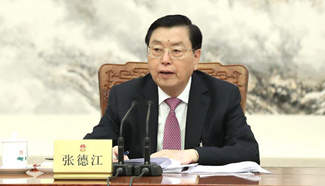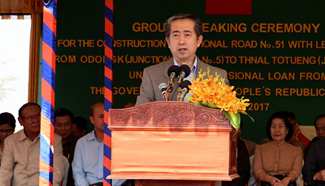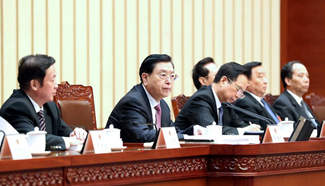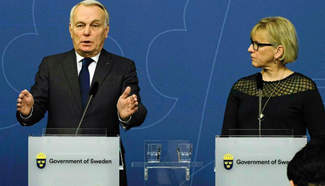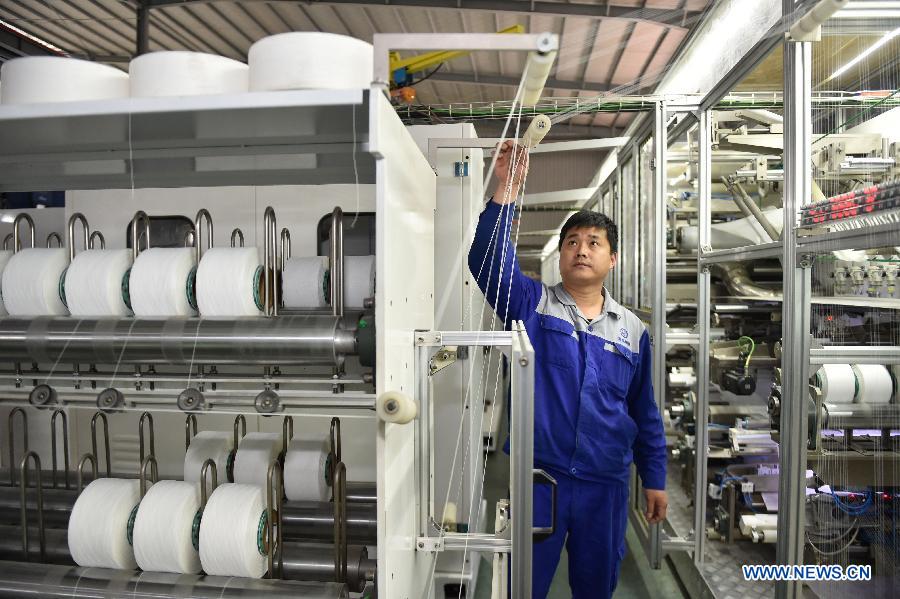
(Xinhua file photo)
BEIJING, March 14 (Xinhua) -- The latest data suggest sustained momentum in the Chinese economy, creating room for policy makers to focus more attention on reforms.
Industrial output rose 6.3 percent in January-February from one year earlier, while fixed-asset investment growth accelerated to 8.9 percent during the period, both beating market expectations, data from the National Bureau of Statistics (NBS) showed Tuesday.
Growth of private sector investment, which accounted for more than 60 percent of total investment, accelerated from 3.2 percent in 2016 to 6.7 percent in the period, the fastest growth in a year.
Real estate investment increased a surprising 8.9 percent in the period, up from 3 percent over the same period of last year, despite tighter regulations to curb speculation and contain property bubbles.
Consumer inflation maintained mild growth of 1.7 percent while the unemployment rate stayed stable in January-February.
However, growth of retail sales, a main gauge of consumer spending, fell below 10 percent for the first time in 11 years because of cooling auto sales, which fell one percent from a year earlier after the country raised purchase tax rates on small cars from 5 percent to 7.5 percent this year.
Most indicators were positive and improving, NBS spokesman Sheng Laiyun said at a press conference, adding the development in the first two months laid "a good foundation" for the country to realize its full-year targets.
China lowered its 2017 growth target to around 6.5 percent, the lowest target in a quarter of a century. The economy expanded 6.7 percent in 2016, its slowest growth in 26 years.
Tuesday's data were the latest among a series of indicators that pointed to stability in the world's second-largest economy, including higher-than-expected factory activity, robust imports and producer inflation rising the fastest in nearly nine years, which boosted industrial profits.
The data offered fresh signs that the economy was stabilizing and picking up steam, said Deng Haiqing, chief economist with JZ Securities, adding that economic growth has reached a turning point in the L-shaped trajectory.
Supported by strong growth in fixed-asset investment and real estate investment, China's economy may grow 6.8 percent or more in the first quarter, Deng said.
Guotai Jun'an Securities was more optimistic, expecting the momentum to continue in March with real GDP growth likely to reach 7 percent in the first quarter and slow slightly in the second quarter.
Analysts said the stabilization enabled policy makers, who had been grappling with downward pressure, to focus more on longer-term gains through wide-ranging reforms.
Li Wei, head of the Development Research Center of the State Council, said the economy was likely to go from a downward stroke in its L-shaped growth trend to a horizontal stroke, but this did not indicate a success in economic restructuring.
Progress has been made as China tries to shift its economy toward a growth model that draws more strength from consumer spending, innovation and services. But Li said more should be done to advance supply-side structural reform and move ahead to cut overcapacity, deleverage, destock, lower costs and improve weak links.
Efforts will also go toward risk control as the country has vowed to build a "firewall" to fend off financial risks, with sharp vigilance over non-performing assets, bond defaults, shadow banking and Internet finance, according to a government work report deliberated at the ongoing annual session of the National People's Congress.
While most February data suggested resilient growth, officials and analysts pointed out some potential areas for concerns.
Sheng warned about strong headwinds from growing uncertainty in the external environment, adding that the foundation for the economic improvement at home needs to be consolidated.
Tom Orlik, chief Asia Economist at Bloomberg, ticked off the weakness in manufacturing sector investment, which remained subdued in the first two months, eking out a 4.3-percent expansion, compared with the 27.3-percent surge in infrastructure investment.




